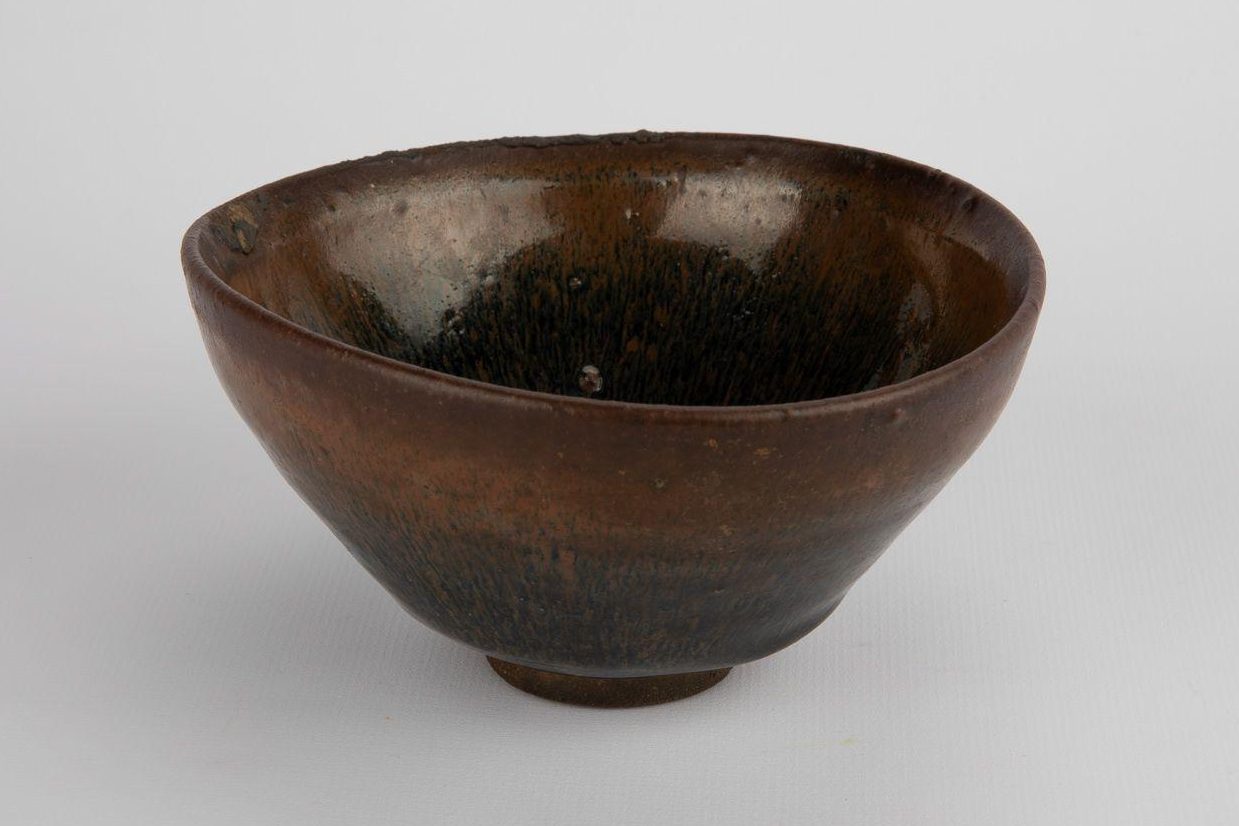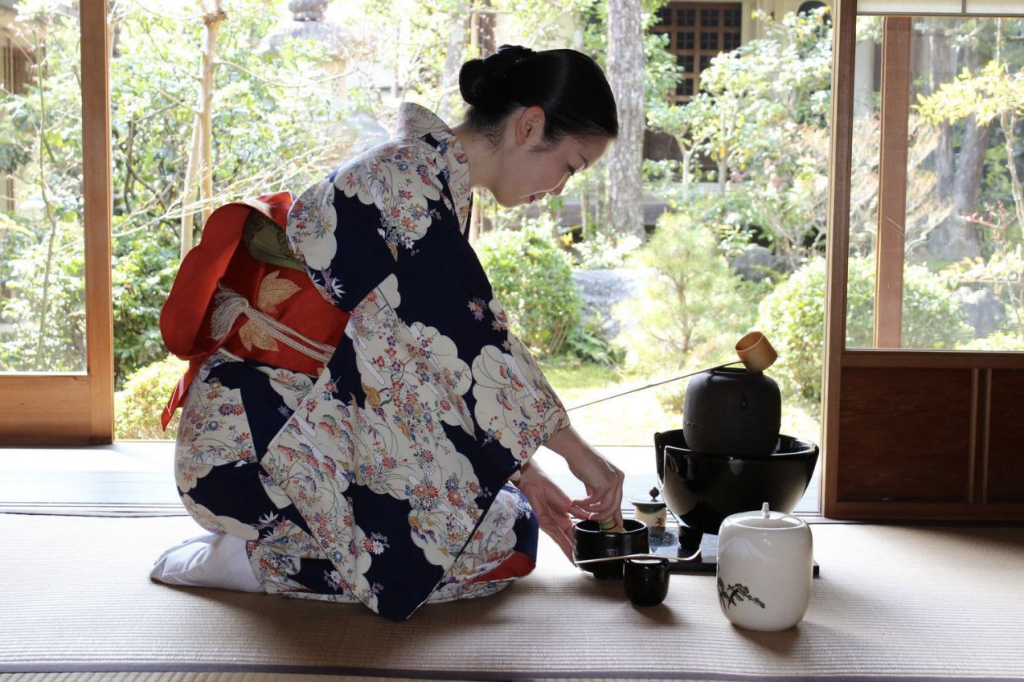Chinese Tea Bowl
Chinese Tea Bowl

Jian ware or Temmoku ware Chinese Tea Bowl
Southern Song Dynasty (1127-1279 CE)
Stoneware
2.5 in x 4.75 in x 4.75 in
China
1978.017
What’s so special about a brown bowl that gets narrower as it reaches the bottom for it to be in an exhibition? Behind this seamlessly simple and ordinary bowl holds a long history in Asian ritual culture and practice. Aging back to the Song Dynasty (960-1279 CE), this bowl is Jianware, more specifically hare fur Jian tea bowl. 1 Taking a closer look at the bowl, one may see the brown and black thin and long pattern scattered around the inside of the Jianware. These patterns symbolize the craftsmanship of the creator and also represent the ritualistic nature of the Jianware bringing Zen and religious ritual into account.
Jianware with meticulous patterns takes extreme craftsmanship as it is extremely hard to control the pattern of the bowl. Essentially, such a pattern is created by precipitation of iron out of the glaze surface, but this process is so fast that it is hard for craftsmen to find the appropriate moment to stop it. 2 The rare pattern made the bowl a treasure and highly sought after by people with high social status like Emperor Huizong of the Song Dynasty (1082-1135 CE, reign 1101-1135 CE). In fact, Emperor Huizong mentioned “盏色贵青黑,玉毫条达者为上(the best tea bowl is with black or green color and thin stripes)” in his book Treatise on Tea. 3
(Type of Jianware that Huizong might prefer)
Jianware rose in popularity during the Song Dynasty’s Tea Competition where the cooking tea is evaluated based on categories such as tea color and bubbles. Since these competitions advocated for the tea with white color, the black colored Jian bowls became the best container to show the tea color. 4 The charm of Jianware not only attracted the emperors and nobles in the court, but also attracted the attention of Buddhists.
During the Kamakura period, Japanese monks discovered the art of ritual preparation of tea making in Buddhist temples and its relationship to Zen which prompted the monks to bring the Jianware back to Japan5. After the exchange into Japan, the tea bowls were renamed Tenmoku, named after the Tenmoku Temple, that the Japanese monks brought the bowls from.6 Similar to Chinese usage of Jianware in tea battlements, Japan’s usage of Tenmoku was also for tea. Conversely, not only was tea a part of Japanese culture but rather integrated the preparation and tasting of tea into a ritual event. Chado, the ritual tea ceremony, originated from 7th century Chinese Zen monasteries and emphasized on the Buddhist practice of Zen. The four essential qualities of chado include: wa(harmony), kei(respect), sei(purity), and jaku(tranquility) elevates the drinking experience to a ceremony appreciating Japanese art, including ceramics such as the Tenmoku. 7 5

(Japanese Chado, Japanese Tea Ceremony)
The Zen aesthetic, underlining the sanctity of natural processes and the absence of human intervention, profoundly resonated with the Japanese, thus further enhancing the appeal of Tenmoku.8 The Tenmoku was made by allowing the glaze to drip down the clay bowl, allowing for simplicity, and irregular patterns inside the clay bowl making each bowl unique. The natural process of making the Tenmoku and the extreme color contrast to show the quality of matcha used in Chado was highly admired by the Japanese people.
In conclusion, this appliance, which at first glance looks unremarkable, has a long history and a resounding reputation. Its special hare pattern isn’t based on pure craftsmanship but also a destined way of natural guidance. The hare pattern satisfied the Song Dynasty emperor’s pursuit of ingenious craftsmanship, which made the hare fur Jianware occupy a very important position in the court tea 6
battlement. Also, the hare pattern met the Japanese Buddhists’ pursuit of natural beauty, so the Tenmoku could travel across the ocean and shine in the tea ceremony in Japan. Even now, the popularity and value of Jianware still remain high as it is a rare treasure in the history of mankind.
Tiffany Gao
Undecided
Class of 2026
Harry Yang
Undecided
Class of 2026
Annotated Bibliography
Source
